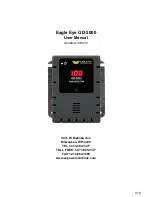
E2610-LEL
Rev 10.05.2021
Propane
A colorless flammable gas that is heavier than air. it occurs in light petroleum fractions.
Propane is used mainly as a fuel and as a feedstock in organic synthesis. It is applied also
as a propellant in aerosol sprays and may be used as an ozone-friendly refrigerant.
Mixtures of propane with butane and other hydrocarbons are referred to as LPG (liquefied
petroleum gas).
Chemical formula
CH
8
CH
2
CH
8
Molar weight
44
Relative gas density (to air)
1.55
Conversion
1 ppm =1.80 mg/m
3
Boiling point
−42 °C
Low explosive limit (LEL), % vol. in air
1.7* (2.1**)
Upper explosive limit (UEL), % vol. in air
9.5
Odor
Odorless when pure. Commercially available propane for
fuel purposes may contain odorant (“gas smell”).
Hazards
Highly flammable, mixtures with air are explosive.
Asphyxiant. May cause dizziness, confusion, excitation
when inhaled.
Exposure limits
(NIOSH)
TWA
1800 mg/m
3
/1000 ppm
IDLH
2100 ppm [10%LEL]
Conversion of ppm to mg/m
3
is calculated for 25°C and 1 atm.
* according to new EU standards ('stirred' concentration of gas)
** according to US standard (‘still gas’ method)
7

































